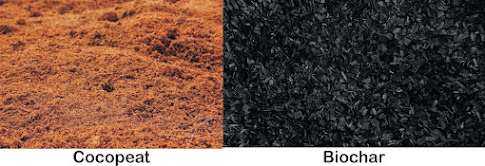Wood-fired stoves are still commonly found in various regions in Indonesia. In addition to being inefficient, the stove also produces smoke pollution which pollutes the environment and is detrimental to health. Smoke pollution from wood-fired stoves is reported as the cause of death for millions of people in the world each year. In addition, many of the firewood used comes from forest wood which causes deforestation. While the further impact of deforestation is the occurrence of natural disasters such as floods and landslides.
Cooking is one of the important human activities to get food, so it is also important to be able to do well. Included as part of that effort is maintaining fuel sustainability, affordable fuel prices, health and environmental aspects. Currently, most of the fuel for cooking in Indonesia is LPG, but in reality, nearly 80% of the LPG used comes from imports or a value of around 60 trillion rupiah. Pertamina, as the sole producer of LPG in Indonesia, currently supplies tend to decrease. However, the demand for LPG continues to increase. LPG demand in 2011 was recorded at 4.35 million tonnes. This need continues to increase every year until it has doubled to 8.55 million tons in 2021. This condition is certainly not good, because it creates dependence on imports, even though in Indonesia there are a number of resources that can be used to overcome this.
Various things based on Indonesia's potential to overcome this include adding new oil refineries so that LPG production can be boosted, coal gasification to produce DME (Dimethyl Ether) whose characteristics are similar to LPG, or using natural gas with gas pipelines. From an energy independence standpoint, this can be done, especially since the raw materials are sufficiently available, but from a bioeconomic and decarbonization point of view (replacing fossil fuels with renewable energy), which is also increasing, this is not appropriate. Renewable energy should be as much as possible as a solution. Wood pellets are fuel or renewable energy from biomass which is ideal for substituting LPG. As a tropical country, Indonesia is rich in biomass because the sun shines all year round, whereas in sub-tropical countries when it's winter the plants stop growing. It can even be said that the biggest producers of biomass are tropical areas or areas where the equator passes, so as a gift from Allah SWT we must be grateful for it.
An efficient and low emission wood pellet stove is the best solution. Why not just a biomass stove? Why does biomass waste, especially wood waste, need to be processed into wood pellets first? By making wood pellets, in addition to uniform shape and size, dry, high density, it is also easy to store and use. Even in the rainy season it can be difficult to find dry firewood in a number of areas, on the other hand wood pellets can be very practical to use. So with standard products according to the specifications mentioned above, wood pellets will be a superior and renewable solid fuel, so that wood pellet stoves will work optimally. Meanwhile, if the fuel is from any biomass with various specifications, then the performance of the stove will not be optimal.
Raw materials for the production of wood pellets can use wood wastes from sawmills, wood processing industries and forest wastes. Many of these wastes have not been utilized and even polluted the environment to become useful and have economic value. The production capacity of the wood pellet factory also needs to be determined so that it meets the needs of its use. To meet the needs of the community at the village or sub-district level, a wood pellet factory can be built with a capacity of 500-1000 tons/month.
Regarding reducing CO2 in the atmosphere in line with decarbonization and bio-economy, a number of companies are currently also carrying out carbon projects, namely by making conservation forests as a medium for absorbing CO2 from the atmosphere (carbon sinks) by receiving compensation in the form of carbon credits. The conservation forest is maintained in such a way that the carbon project is a success. The occurrence of deforestation in conservation forest areas is something that must be avoided. To avoid this, the wood pellet stove program can be a solution. Communities around the conservation forest who use wood pellets for their cooking stoves make firewood no longer used and deforestation does not occur.





















































